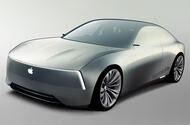How Did Apple’s Secret Car Project Change the Auto Industry, Even After It Was Canceled?
If you’ve ever wondered what happens when a tech giant like Apple tries to build a car, you’re not alone. Project Titan, Apple’s ultra-secretive electric vehicle initiative, captured imaginations for years before quietly being shelved. But here’s the twist: even though the Apple car never hit the road, the project’s influence is still rippling through the automotive world. Let’s dig into what really happened behind the scenes—and why it matters for the cars you’ll drive tomorrow.
Why Did Apple and Other Tech Giants Struggle to Launch Their Own Cars?
Building a car isn’t like launching a new phone or laptop. Just ask Dyson, the British company famous for its vacuum cleaners, which poured £2.5 billion into its own electric vehicle before pulling the plug in 2019. The reason? The leap from prototype to mass production is a financial and logistical mountain, even for well-funded innovators. Apple kept its car project alive for another five years after Dyson’s exit, but ultimately reached the same conclusion: the auto industry’s low profit margins, sky-high costs, and intense regulations make it a tough nut to crack.
It’s easy to see why Tesla gets so much credit. They managed to do what even Apple and Dyson couldn’t—turn a tech-driven vision into a real, profitable car company. The lesson? Even the world’s most successful tech brands can stumble when faced with the realities of automotive manufacturing.
What Did Apple Do Differently—and What Can Car Makers Learn From It?
Despite the secrecy surrounding Project Titan, a few key lessons have emerged. Manfred Harrer, now head of vehicle development at Hyundai Motor Group, spent time as a senior director of product design engineering at Apple. While he’s still bound by non-disclosure agreements, Harrer has shared some insights about Apple’s approach that are shaking up traditional car development.
First and foremost, Apple’s obsession with the customer stands out. “It’s customer first. It’s so customer-centric,” Harrer recalls. This isn’t just lip service—Apple’s legendary attention to detail and relentless focus on user experience set a new bar for what’s possible. Harrer notes that while Hyundai and other automakers strive for customer focus, Apple’s standards pushed him to think even bigger: “If there’s something you think is a given, challenge it. You can question it. You can think it through.”
That mindset—never settling for “good enough”—is now filtering into the auto industry, especially as cars become more like rolling computers.
How Are Smartphones Reshaping the Way Cars Are Designed?
Think about the last time you sat in a new car. Chances are, the dashboard looked more like a giant tablet than a traditional cluster of dials and buttons. That’s no accident. Harrer points out that today’s drivers (and especially their kids) expect their vehicles to work as seamlessly as their smartphones, whether they’re using Apple or Samsung.
It’s not just about screen size anymore. Responsiveness, app integration, over-the-air updates, and the ability to fix bugs remotely—all of these are now must-haves for modern vehicles. According to a 2023 McKinsey report, over 60% of car buyers in the US and Europe now consider in-car technology a top priority, sometimes even above horsepower or fuel economy.
Automakers are racing to keep up. Companies like Hyundai, Volkswagen, and Ford have all announced major investments in software development, aiming to deliver the kind of intuitive, connected experience that Apple pioneered in consumer electronics.
What’s the Real Legacy of Apple’s Canceled Car Project?
Here’s the irony: even though the Apple car never made it to showrooms, its influence is everywhere. The mere possibility of an Apple vehicle forced traditional automakers to rethink their approach to design, user experience, and technology integration. It’s not just about building a car that drives well—it’s about creating a product that feels as polished and personal as the devices we use every day.
Harrer sums it up best: “How the customer looks, thinks and experiences the product is where car makers really need to focus and can squeeze out more.” That’s a far cry from the old days, when horsepower and badge prestige ruled the road.
What Should Drivers Expect Next?
So, what does all this mean for you? Even though you won’t be able to buy an Apple car anytime soon, you’ll see the impact of Project Titan every time you step into a new vehicle. Expect smarter, more intuitive interfaces, regular software updates, and a relentless focus on making every detail just right.
And if you’re wondering whether another tech giant will take a shot at building a car, don’t count them out. The bar has been set higher than ever—and the race to build the ultimate user-friendly vehicle is just getting started.
The bottom line? Sometimes, the projects that never launch end up changing the world the most. The Apple car may be gone, but its spirit is driving the next generation of automotive innovation.

